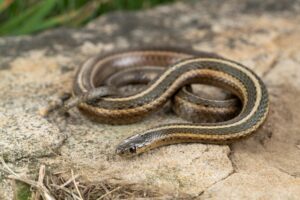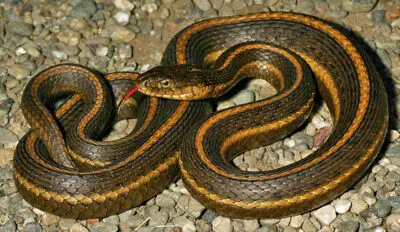What do garter snakes eat? This simple question opens up a fascinating window into the dietary habits of one of the most common and widely distributed snake species in North America, the garter snake. From insects to amphibians, these slender reptiles have a diverse palate that reflects their adaptability and ecological role.
Garter snakes are opportunistic predators with a varied diet that primarily consists of small prey such as insects, worms, slugs, and amphibians. They are particularly fond of frogs and toads, which make up a significant portion of their diet, especially during warmer months when these amphibians are more active.
In addition, garter snakes also feed on small fish and sometimes even small mammals like mice and voles. Their diet largely depends on what is available in their habitat, and they are known to adapt their feeding habits based on seasonal changes and local prey abundance.
Understanding the Diet of Garter Snakes

Garter snakes are fascinating creatures with diverse diets that primarily consist of small prey items. Here’s a breakdown of what they typically eat:
- Amphibians: Garter snakes are known to feed on amphibians like frogs, toads, and newts. These creatures are often found near water bodies, which are natural habitats for both garter snakes and amphibians.
- Fish: Near aquatic environments, garter snakes may also prey on small fish. They are skilled hunters in water and can catch fish using their agility and speed.
- Insects: Insects form a significant portion of a garter snake’s diet. They consume a variety of insects, including crickets, grasshoppers, caterpillars, and beetles. Garter snakes are known for their ability to control insect populations, making them beneficial to ecosystems.
- Earthworms: Garter snakes are often found in areas with moist soil where earthworms thrive. Earthworms are a common food source for garter snakes due to their abundance and ease of capture.
- Small mammals: While less common, garter snakes may occasionally consume small mammals such as mice, voles, and shrews. However, this typically occurs when other prey sources are scarce.
- Bird eggs: Garter snakes are opportunistic feeders and may raid bird nests to consume eggs. Their slender bodies allow them to access nests that are otherwise difficult for larger predators to reach.
Also, garter snakes are non-venomous and rely on constriction to subdue their prey. Their diet may vary based on factors such as habitat, availability of prey, and seasonal changes. Additionally, garter snakes play a vital role in maintaining ecological balance by controlling populations of various small animals and insects.
What do garter snakes eat?
The primary prey of garter snakes typically consists of small vertebrates and invertebrates. Here’s a more focused breakdown:
- Amphibians: Garter snakes have a strong affinity for amphibians such as frogs, toads, and salamanders. These creatures are often abundant near water sources, which are favored habitats for both garter snakes and amphibians.
- Fish: Near aquatic environments, garter snakes may target small fish as a significant part of their diet. They are agile swimmers and adept at catching fish in water.
- Insects and other invertebrates: Garter snakes feed extensively on insects, including but not limited to grasshoppers, crickets, caterpillars, beetles, and worms. Invertebrates form a substantial portion of their diet, particularly in terrestrial habitats.
While garter snakes may occasionally consume other prey items like small mammals and bird eggs, their primary prey tends to be amphibians and invertebrates due to their abundance and accessibility. This dietary preference is influenced by the snake’s habitat, hunting behavior, and metabolic needs.
50 Primary Prey of Garter Snakes

Here’s a list of 50 primary prey items commonly consumed by garter snakes:
- Frogs
- Toads
- Salamanders
- Small fish
- Earthworms
- Crickets
- Grasshoppers
- Caterpillars
- Beetles
- Moths
- Slugs
- Snails
- Newts
- Tadpoles
- Minnows
- Small rodents (e.g., mice, voles)
- Lizards
- Worms
- Insects (general)
- Spiders
- Ants
- Termites
- Beetles
- Fly larvae (maggots)
- Dragonflies
- Damselflies
- Small birds (e.g., nestlings)
- Bird eggs
- Grass snakes
- Slow worms
- Small turtles
- Millipedes
- Centipedes
- Isopods (woodlice)
- Small snails
- Small slithering mammals (e.g., shrews)
- Fish eggs
- Worm eggs
- Cricket eggs
- Aphids
- Leafhoppers
- Fleas
- Ticks
- Mosquito larvae
- Springtails
- Mayflies
- Caddisflies
- Stoneflies
- Water beetles
- Diving beetles
This list encompasses a wide range of both vertebrate and invertebrate prey items that garter snakes commonly consume in their natural habitats.
Hunting Strategies of Garter Snakes


